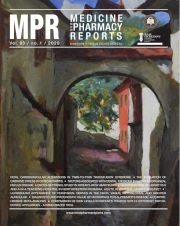Mandibular symphysis morphology and lower incisor angulation in different anteroposterior jaw relationships and skeletal growth patterns – a cephalometric study
DOI:
https://doi.org/10.15386/mpr-1356Keywords:
mandibular symphysis, morphology, lower incisor angulationAbstract
Objective. The purpose of the present study was to assess the symphyseal morphology and lower incisor angulation in different anteroposterior relationship and in different growth patterns and to investigate whether the symphyseal morphology had any correlation with dentofacial parameters.
Method. Random Sampling method and lateral cephalograms of 90 subjects, age group 16-30 years, were divided into 30 in each group, i.e. Class I, Class II & Class III after calculating the following parameters (ANB angle, wits appraisal). After that, groups were again divided into 10 in each subgroup i.e. Average, Horizontal and Vertical growers.
Results. Results showed the increase in actual symphysis width, inclination of the alveolar part, total height of symphysis and reduction in overall width along with retroclination of lower incisors in class III subjects as compared to class I and class II. Similarly actual and overall width of the symphysis were decreased and inclination of the alveolar part, symphyseal height and symphyseal ratio were increased in vertical growers.
Conclusion. The dimensions and configuration of Mandibular Symphysis in class III was found to be different than those in Class I and Class II relationships; the alveolar part of Mandibular Symphyseal compensated for the skeletal relationship in the Class III pattern. Mandibualr Symphysis dimensions were strongly correlated to anterior facial dimensions. Similarly the dimensions and configuration of Mandibular Symphysis was also different in vertical growers as compared to horizontal and average growers, moreover symphyseal morphology and lower incisor angulation had a correlation with dentofacial parameters.
Downloads
Published
How to Cite
Issue
Section
License
The authors are required to transfer the copyright of the published paper to the journal. This is done by agreeing to sign the Copyright Assignment Form. Whenever the case, authors are also required to send permissions to reproduce material (such as illustrations) from the copyright holder.

The papers published in the journal are licensed under a Creative Commons Attribution-NonCommercial-NoDerivatives 4.0 International License.

